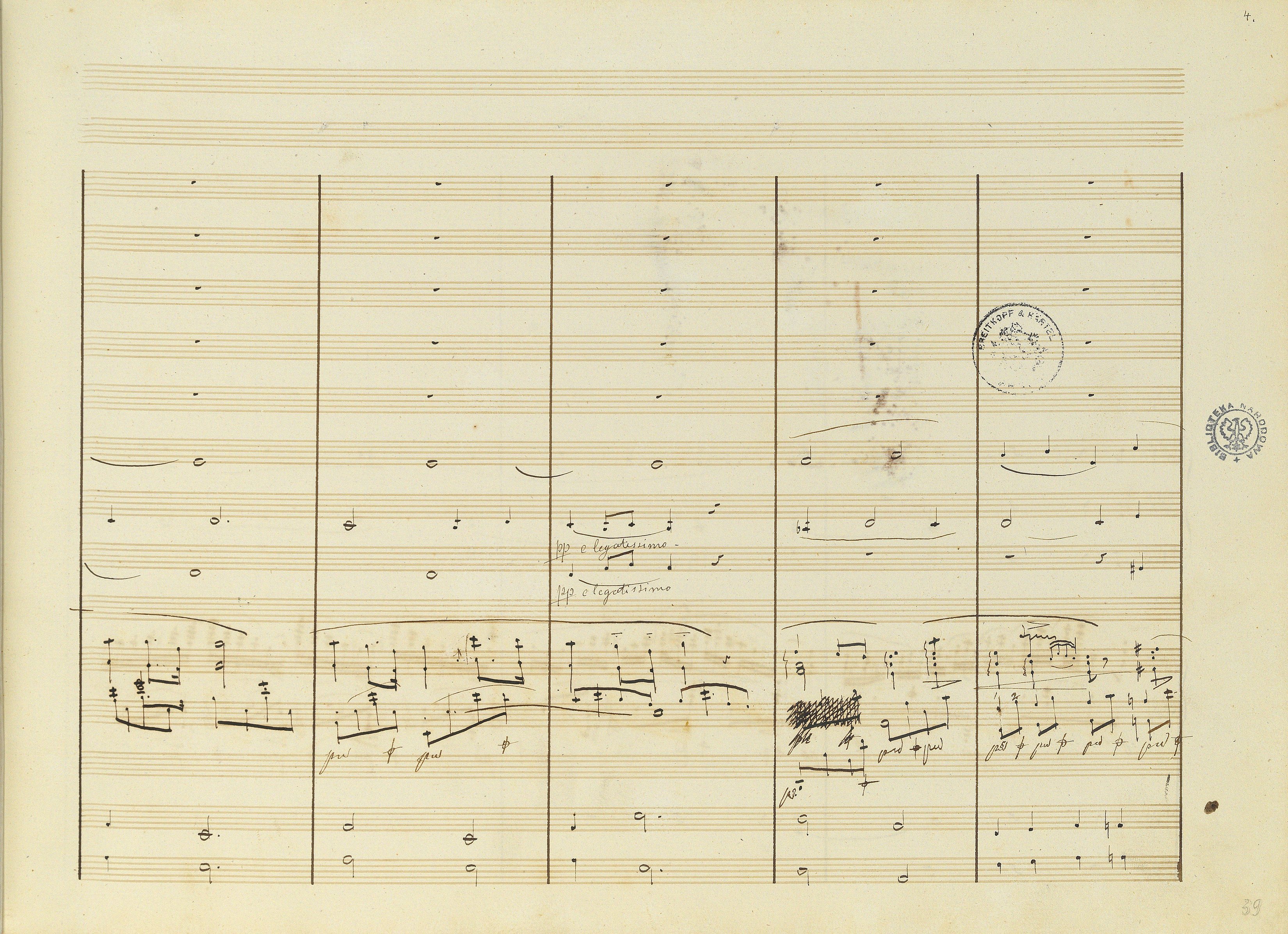



Omission of tenuto dashes over three octaves in GE1 (→FE→EE), despite having been consistently carried out both in this bar and analogous bar 86, does not seem to be Chopin's proofreading. According to us, it could have been a result of the engraver's misunderstanding of the combination of three articulation indications: a slur, tenuto marks and staccato dots. A slur actually designates also phrasing, while dots under a slur were generally used by Chopin to mark a lighter and shorter non legato.
It is the only example of the use of tenuto marks by Chopin in a notation dedicated for print (dashes are also present in the Concerto in E minor, Op. 11, mvt. II, bar 47, and Ballade in G minor, Op. 23, bars 194-198, in both places added in a pupil's copy).
Compare the passage in the sources »
category imprint: Differences between sources
issues: Errors in GE, GE revisions
notation: Articulation, Accents, Hairpins



